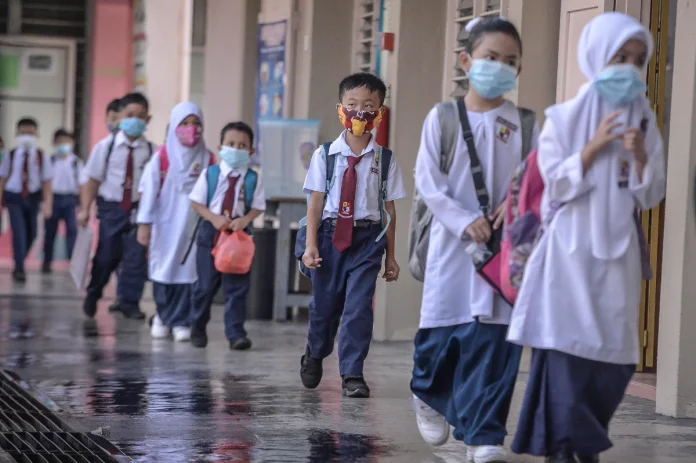Malaysian schools must prioritise mental health, trauma-informed care and empathy to create safe spaces for learning.
THE recent tragedies in Malaysian schools are not isolated incidents, but are related to the state of mental health among students.
Earlier this year, a mental health screening showed many students exhibiting signs of depression, stress and anxiety.
Unfortunately, mental health remains a topic many students find hard to talk about for fear of being stigmatised or ostracised.
For every tragedy that makes headlines, there are thousands of students who silently carry emotional scars. Some are close friends of the victims; others may have survived similar events. The pressure cooker environment of modern education exacerbates this silent suffering.
ALSO READ: When schools become crime scenes
Students today navigate intense academic competition, compounded by the constant social and image-based pressures of digital platforms.
For many, school is not just a learning ground but also a site of profound stress, often stemming from family expectations, bullying or even violence witnessed online or in their communities.
This continuous exposure to high-stress factors creates a state of chronic vigilance, exhausting their capacity for emotional regulation.
Crucially, many students lack the fundamental emotional literacy required to articulate their distress. They know they feel bad, but they do not have the vocabulary or the cultural permission to identify their feelings as anxiety, depression or trauma.
ALSO READ: Malaysia launches comprehensive study on social issues in schools
This failure to communicate turns inward, manifesting as aggression, withdrawal or self-harm.
Breaking the stigma requires more than campaigns; it demands embedding emotional vocabulary and self-awareness into the daily school curriculum, treating feelings as data points, not failures.
Following the fatal Bandar Utama school stabbing, students reportedly struggled to resume classes. Teachers observed an increase in absenteeism and signs of distress among students. Many have reported having trouble concentrating, mood swings and even sudden tears.
Teachers are not immune; many take on the role of a counsellor, mediator or even emotional anchor while dealing with their own shock, guilt and emotional burnout.
Where do we go from here?
If the goal is to rebuild trust and safety in schools, responses must go beyond temporary grief counselling or disciplinary action. Mental health care must be continuous, accessible and, more importantly, normalised.
As mentioned earlier, the Education Ministry (MOE) has announced five immediate reforms focusing on mental health, reproductive and social health education, child protection policy, teacher care and student voice.
Trauma-informed education should be at the core of this change. Teachers are often the first to notice when something is wrong, yet many lack the proper training to identify trauma or emotional distress.
Combined with the lack of knowledge on how to properly approach someone who may be emotionally volatile, this can lead to cases where a student’s mental condition reaches a breaking point.
Workshops and professional development programmes must equip our teachers with the proper knowledge and training to recognise symptoms of mental illness and respond appropriately.
The existing student-to-councillor ratio is critically off-balanced. Counsellors are often overburdened with administrative tasks, leaving minimal time for actual therapeutic intervention or crisis management.
To truly adopt a trauma-informed system, MOE must allocate significant resources to drastically increase the number of full-time counsellors and ensure they are trained in crisis intervention and post-traumatic recovery.
Another equally important aspect is the creation of safe reporting systems. Students need to know that if they witness violence or feel unsafe, they can speak up without fear of retaliation.
Anonymous reporting channels, peer-support networks and visible accountability measures would help restore a sense of trust in schools.
A school-wide ecosystem of care plays a crucial role. Counsellors, teachers, administrators and mental health professionals must collaborate as a support network.
This ensures that when tragedy strikes, no one is left to process trauma alone.
Parents also play a vital role. Open conversations at home about stress, relationships and boundaries can encourage children to speak up about their issues.
Society needs to put mental health on the same level of importance as academics.
Our school system’s next move should not just be about preventing the next tragedy; it should also be to rebuild the culture of care and empathy. Policies will not be sufficient without cultural change and humanity.
Mental health development should be accorded the same importance as academic achievement. Schools should normalise conversations around stress, emotions and relationships through open campaigns.
When students can safely say, “I’m not okay”, it becomes the first step towards healing.
MOE’s inclusion of “student voice” among its five reform pillars is especially meaningful. It recognises that students themselves understand what makes them feel safe or vulnerable. By involving them in safety policies, awareness programmes and peer initiatives, schools can rebuild mutual trust and accountability.
Teachers must be supported as well. As previously stated, many act as informal counsellors, often absorbing students’ emotional burdens while suppressing their own. Teacher-wellness programmes, mental health days, and inter-teacher support groups should be standard practice. An emotionally burnt out teacher cannot nurture emotionally healthy students.
Beyond today’s reforms lies the challenge of preparing for tomorrow. MOE’s upcoming school curriculum aims to integrate “character education” as a foundation from preschool onwards – a move designed to imbue empathy, resilience and emotional intelligence directly into the learning process.
Experts suggest expanding this by including digital-wellness education, helping students manage the mental pressures of social media and emotional resilience training. The main goal is to teach them ways to cope with failure and uncertainty.
Another step forward is leveraging data and technology to identify early warning signs of distress. Regular mental health screenings, attendance tracking and feedback surveys can provide schools with insight into the emotional state of their students.
However, progress depends on equitable access. Rural and underfunded schools often lack counsellors or safe spaces entirely due to budget constraints. MOE’s collaboration with the Health Ministry and strategic partners must ensure that support reaches every student, not just in urban centres.
Lastly, community partnerships can bridge the gap between school and the real world. Collaborations with NGOs, mental health advocates and youth organisations can create continuity of care beyond graduation.
Healing and growth do not end at the school gate.
The goal ahead is not just to prevent tragedies that may occur; it is to transform Malaysia’s schools into sanctuaries of safety for learning and emotional growth. Policies may guide the process, but true change lies in how we treat one another every day with patience, understanding and care.
A student who feels unsafe cannot truly learn, and a teacher who feels unsupported cannot fully teach.
Put both together, and it becomes a recipe for disaster.
However, by enforcing strong policies coupled with genuine compassion, schools can once again become places where both minds and hearts are protected.
The measure of a school’s success is not only in grades or rankings but also in how well it protects and nurtures the minds that walk its halls.
Tan Sri Lee Lam Thye is chairman of Alliance for a Safe Community.
Comments: letters@thesundaily.com







